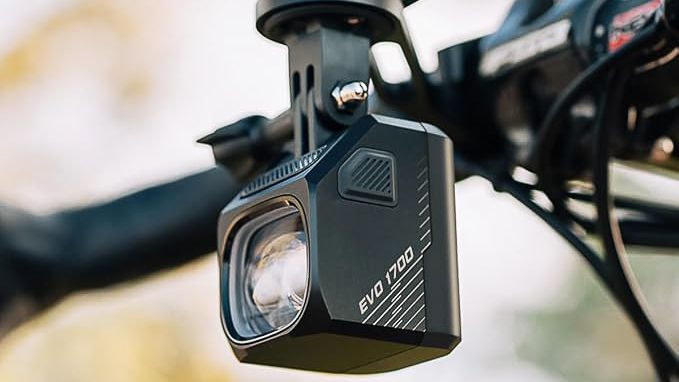Best winter cycling jackets: Tried and tested options to make sure you stay warm on the bike
The best winter cycling jackets will keep you the right temperature, and these are the best of the best
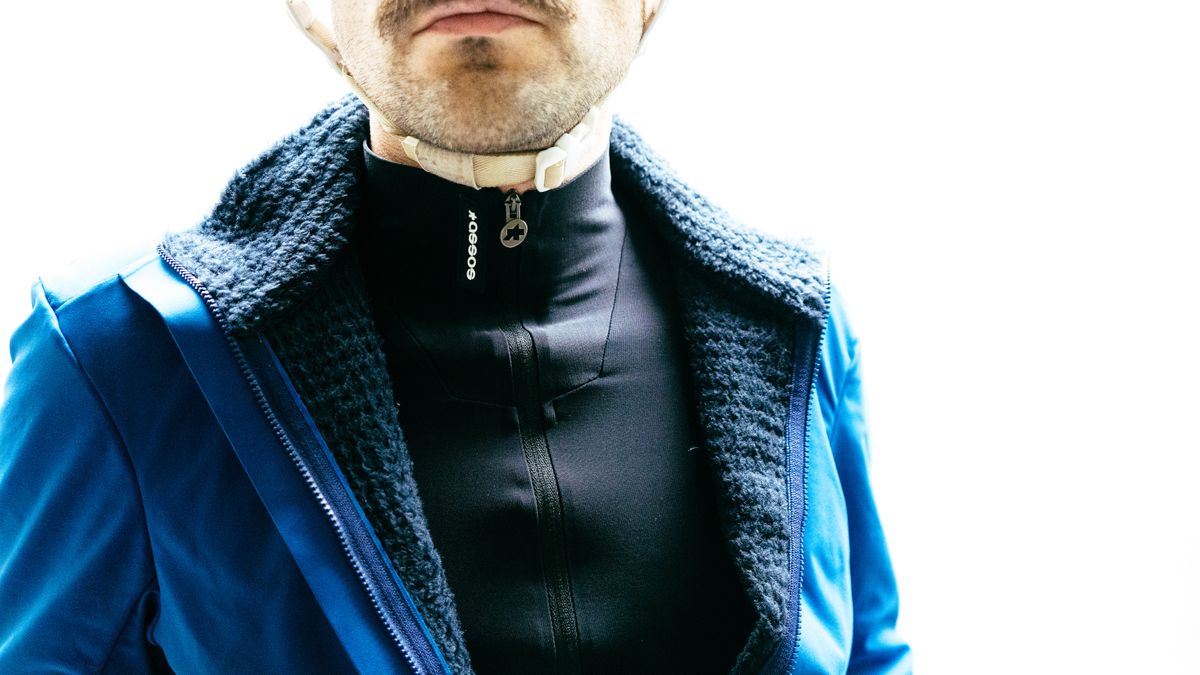
If you want to keep riding when it's cold then sorting yourself out with a really good winter cycling jacket is a really solid investment. It will keep your core warm, which in turn helps keep your extremities warm. Naturally, you'll also want to bolster these with the best winter cycling gloves, and some of the best winter cycling socks too, but if you keep your torso warm everything else gets a lot easier.
All the jackets in this guide are designed to keep you warm, rather than dry. Some of them have water repellency built in, but if you intend on riding in the rain then you need to check out my guide to the best waterproof cycling jackets instead. The jackets below in many cases can fit under a waterproof shell for a truly impenetrable system, but that's a rare need indeed.
The jackets that make it into the top-rated section of the guide are distilled down from a much bigger list of winter jackets that didn't quite make the cut. These are outlined in the 'also tested' section. All in all, there are hundreds of hours of testing by myself and my colleagues in some bitterly cold, and often damp weather so that we can bring you a useful list of recommendations rather than simply a catalogue of options.
Winter cycling also means different things to different people, so I've put together a series of FAQs at the bottom of the page to help you make the right choice for you with what can be quite a big ticket item.
Quick list
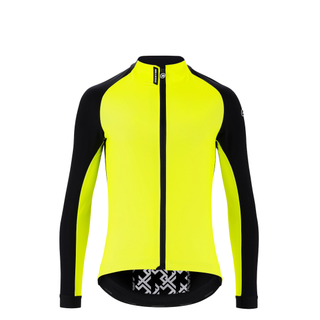
More or less all the winter jacket you'd ever need. Impressively low bulk whilst still retaining a lot of warmth, a great fit, luxurious materials, and brilliant pockets. With the right base and mid layers, it'll see you through most of what winter can throw at you, including the occasional rain shower. What's more, the trim cut means that it fits under all but the most race fit of waterproof jackets too. It's not necessarily the outright warmest, but it will cover most riders for most riding, most of the time, and for that, it really should be applauded.
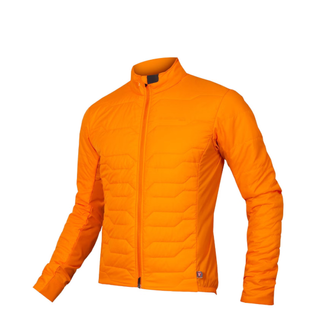
The Pro SL Primaloft Jacket II from Endura takes my pick of the best budget jackets because as well as being relatively easy on the wallet for a quality piece of kit, it works just as well as a mid-layer as it does as an outer. If it's chilly, but not arctic, then wear it over a long sleeve jersey and a base layer. If it's properly freezing then you can throw a shell jacket over it, or a thicker jacket from this guide like the Velocio Alpha Zero for the ultimate setup for keeping the cold at bay.
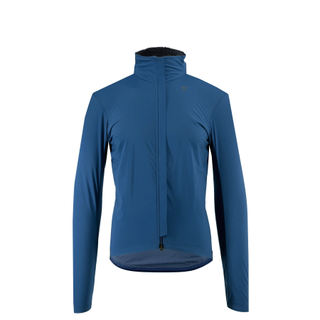
If you want to stay out riding when the temperatures drop close to or below freezing then the Velocio Alpha Zero is my pick for seeing you through in comfort. The entire front, collar, and the front of the sleeves are backed by an extremely high loft Polartec Alpha fleece, while the back is a thick but unlined softshell to stop you totally overheating. It's absurdly cosy, and roomy enough to fit any mid layer you want without it being compressed to the point of uselessness. If you really suffer in the cold then this would be my pick.
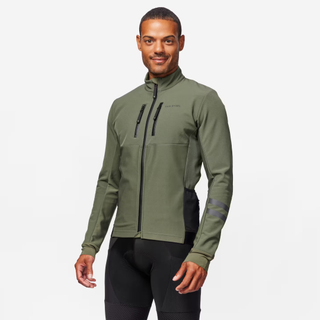
But this one is cheaper than the best budget one?? Yes, that's as may be, but I think the Endura option is a better jacket. For gravel, in the winter, you're going to trash your gear. This Van Rysel Jacket isn't all singing and all dancing, but it's certainly adequate enough for winter gravel riding if you're not out all day, and at a price tag that's a lot more affordable so when you do get it filthy you won't feel so bad. It has ten pockets too: 2 chest, 3 rear, 2 hip, 2 rear zipped, and one big full width net one at the back too. Capacity for all you'd ever need.
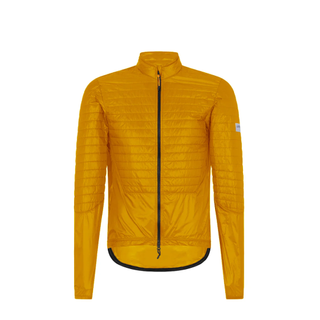
On those cold days sometimes more than a basic wind jacket or gilet is needed as an emergency layer. This superlight jacket takes the basic form of a wind jacket, but adds a modicum of extra insulation on the chest and upper arms. It weighs basically nothing (under 100g), packs down to smaller than many gilets do, and does just enough to keep the worst of the chill at bay for those days where you don't need a fully fledged winter layer. It's not going to compete with the others on this list for warmth, but that isn't what it's for. It can easily come with you on every ride.
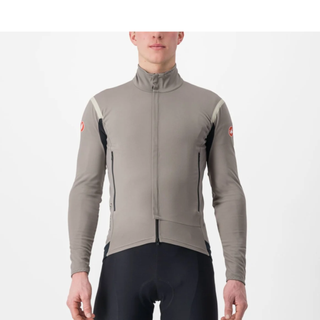
The Perfetto is the archetypal modern, unlined softshell cycling jacket. It builds on the original Gabba, and utilises windproof, but breathable Gore-Tex Infinium layer to keep the wind chill at bay. It'll shrug off showers, or you can just get wet without overheating. For those windy, showery, grim but not freezing days where you're riding hard it's perfect. If you want the same sort of thing, but with greater water resistance, try the new Castelli Gabba R instead, but if you're only going out in the odd shower then stick to the Perfetto.

It may be an unpopular opinion, but I'd take a long ride on a crisp, bright day when the temperature is around 7 degrees over a 30 degree summer scorcher any day. Winter riding is unendingly satisfying, and having spent years riding outside all year round I know what works and what doesn't. I got cold and miserable so you don't have to. Winter jackets are a big ticket item, so I want to make sure you're getting the best possible options for your money.
Recent updates
November 13th, 2024 This guide has been totally refreshed for 2025/25 with a whole host of new products to sit alongside some established firm favourites, and the number of key product recommendations has been trimmed down to make it as useful as possible. An 'also tested' section has been added to cover those options that didn't make the cut, but are still decent options if you can pick them up at a discount.
Best Winter Cycling Jackets available today
Best Overall




Specifications
Reasons to buy
Reasons to avoid
✅ You want most bases covered most of the time: If you don't want to think, buy this jacket. It'll be more or less perfect for most things, most of the time. That's why it's the best overall.
✅ You don't want a bulky jacket: It's a pretty trim fit, no big baggy insulation, but it's not as low profile as the like of the Perfetto. A happy middle ground.
❌ You want room for a thick mid layer: The trimmer cut means you'll have to be more selective with what you wear underneath when it gets bitter.
❌ You want a two-way zip: It's a small point, but being able to open a jacket from the bottom can be useful sometimes and you can't here.
There are ways to maximise your budget through layering with shells. You might also find that a less robust softshell is plenty for your climate. Assos takes a different approach though, and does expect this jacket to take the place of a jersey too, and be worn with just a base layer. In practice I prefer to ride it with a jersey underneath, and there is definitely room for a thin but fleece-backed winter jersey and a decent base layer to keep it going into really cold temperatures.
What you can't fit under it is a proper mid layer. No mini puffy jacket, or big fleecy Polartec Alpha half zip. That means you can expect a tight fit, but because the Assos Mille GT Winter jacket Evo is part of the Mille GT line of products, it has a slightly more relaxed fit. It's still pretty tight compared to a club fit from brands like Sportful, but it’s not as tight as other Assos jackets.
When it comes to fabric Assos has something called NEOS. NEOS medium is a very capable waterproof 3-layer membrane fabric that Assos uses for the front of the jacket. The tops of the arms and upper back get NEOS light, which boosts breathability and reduces insulation. Then for more breathability, under the arms and the lower back have a non-membrane fabric.
Again owing to the design of the jacket as both outer and mid-layer in one, you can count on quality pockets. You’ll never find yourself needing to grab a jersey just to get pockets (though if you do want extra capacity it's a good way to achieve this) and you also don't have to try and access pockets underneath. Unfortunately that last bit does mean the zipper isn’t as good as some of the competition. Other than the zipper though, the thing you’ll need to consider with this jacket is whether you’d rather use a shell and a mid-layer or just a single piece.
The women's equivalent, the Uma GT Winter Jacket, performed just as well, though as is often the case the sizing recommendations given by Assos don't translate into reality quite perfectly.
My old colleague Josh Ross wrote a full Assos Mille GT Winter Jacket review if you need even more info, and we've got a full write up of the women's version too, the Assos Uma GT Winter Jacket.
Best Budget






Specifications
Reasons to buy
Reasons to avoid
✅ You already have a decent outer shell: This jacket works well as a mid layer to add a good degree of insulation to a jacket you already have.
✅ You want puffy jacket insulation without the bulk: Riding in a full down jacket is too hot unless it's well below zero. This gives you that puffy insulation, but not so much that you overheat.
❌ You want a bit of water resistance: It has a DWR coating, but it doesn't shrug off the odd shower like the Assos or Castelli options.
❌ You like a short torso: The body is quite long, so if you have a short torso outer shell then try something a little more cropped.
What makes the Endura Pro SL Primaloft II Jacket so good is that it works just as well as an outer layer as it does a mid layer. There are some really brilliant mid layers on the market, the Pearl Izumi Pro Alpha or the extremely similar Velocio Alpha Long Sleeve are incredible at adding insulation under a jacket, but they don't work terribly well on their own. Here though you get a jacket you can throw over a jersey when it's pretty cold, and wear under an outer shell like the Velocio Alpha Zero below for the ultimate cosy setup in near- or below-freezing conditions.
No matter how you use it, there's a comfortable fit and the Primaloft insulation provides a lot of warmth without bulk. The outside face has a DWR coating in case there's a bit of mist in the air and it does a good job blocking wind. At the rear, the drop tail has three traditional pockets, though the centre is a bit narrow, plus a zippered valuables pocket. If you are bikepacking this is a very packable option as well.
Yes, it is more expensive than what I have recommended as 'best for gravel' further down the page, but the versatility you get here adds so much value. You can add pieces over time as you need, be they warmer base layers, a waterproof shell, or a super warm outer layer, and you'll eventually end up fully geared up for about as bad weather as it's reasonable to ride in.
One thing to bear in mind is that the torso is quite long, so if you do have a particularly cropped, race fit shell jacket that you want to layer up under (I'm talking things like the Rapha Pro Team Gore-Tex Jacket) you may risk having the Endura poke out the bottom.
As above, my old colleague Josh Ross wrote up an Endura Pro SL Primaloft II Jacket review and you can read Immy's Endura Women's Pro SL Primaloft cycling jacket review for a woman’s point of view.
Warmest Winter Cycling Jacket







3. Velocio Alpha Zero
Specifications
Reasons to buy
Reasons to avoid
✅ You want to be toasty warm: The combination of the Polartec Alpha fleece insulation and the Power Shield membrane makes for a very warm, windproof, and somewhat waterproof jacket too.
✅ You want room for layering: If you really suffer in the cold you can fit something big underneath it still. I recommend the Velocio Alpha Long Sleeve mid layer if you want the warmest possible setup, or even a mini down jacket.
❌ You run hot: If you're a sweaty rider who runs hot even in the cold then this may well be too warm for you. Likewise, it's likely too hot for really hard efforts. For long zone 2 winter riding it's perfect, but for intervals go for something like the Assos or Castelli option.
❌ You want a race fit: Fluffy insulation needs to stay lofted to work, so the cut is pretty roomy. If you want to stay aero all year then go for the Assos option.
This all new jacket from Velocio is the successor to my previous favourite winter cycling jacket, the Velocio Alpha Merino Air. The latest version adds a waterproof membrane, and swaps the merino insulation for Polartec Alpha high loft fleece. It is, in short, the ultimate zone 2, big winter trundle, super cosy, comfortable jacket. Paired with a high loft mid layer like the Alpha Long Sleeve from the same brand, or the Endura Pro SL Primaloft, you'll have a jacket that's capable of seeing you into sub-zero temperatures with ease.
The insulation is the star of the show here, with the chest, leading edges of the arms, and the entire collar backed with high loft Polartec Alpha fleece. A super fleecy neck is key to keeping warm as a tonne of blood passes through this area. The outer fabric has a really solid DWR treatment too, so it can shrug off some rain, but while it does also have a membrane with a claimed 20,000mm hydrostatic head figure (meaning on paper it is pretty waterproof), the lack of taped seams mean I wouldn't pick it for a big ride in torrential rain.
The membrane is to a degree what helps keep the jacket so cosy, as well as the insulation, by blocking the wind and slightly reducing the breathability it does a fantastic job of trapping body heat and keeping it where you need it.
The fit is far from racy, with more than enough room to add a really warm mid layer without compressing the insulation to such a degree that it ceases to become effective, or making the whole setup uncomfortable. Even fully layered up there's no constriction anywhere, with complete freedom of movement. The cuffs are a little baggy, but considering that when you're wearing this you will almost certainly also be wearing big winter gloves they make total sense.
This is not the jacket for doing hill sprints in or a chain gang. Its warmth is also its weakness when you start heading towards the higher heart rate zones. Protracted climbs are fine when you can open the chest up or the bottom end of the zipper, but for really hammering it then the Assos is probably a better option for when it's very cold.
Best for Gravel







4. Van Rysel Winter Road Cycling Jacket Endurance
Specifications
Reasons to buy
Reasons to avoid
✅ You don't want to spend a fortune on a jacket you'll get filthy: It's certainly not absolute rock bottom in terms of pricing, but compared to most other options on the market it's very reasonably priced, so less of a worry about getting it filthy or damaging it if you have a crash.
✅ You want a tonne of storage space: Ten pockets is more than anyone could ever ask for. If you need more than that then it's time to think about a frame bag or a bar bag.
❌ You want a two way zip: It's less of a problem with winter jackets than it is on a waterproof shell, but in any case, this jacket doesn't have one.
❌ You want a well fitting jacket: It is a little tight in the forearms, but then if you went up a size the shoulders and chest would be rather baggy. This probably matters less when you're trying to think about not landing in a muddy puddle though.
Here's my not so hot take: If your gravel riding is clean and dry, just wear road gear. In Britain though, as I imagine is the case in the more rain-soaked areas of North America, gravel riding in the winter means smashing through muddy puddles and getting absolutely caked in muck, plus an increased risk of falling off.
It is really hard to justify spending hundreds of pounds or dollars on a jacket that is going to get trashed. For ages I just used a jacket I bought in the middle aisle of Aldi for £12, saving my Castelli Gabba for road use. It wasn't perfect, but it worked, and meant I never shied away from the mud that makes winter gravel riding so much fun.
My tip for mucky gravel riding is to tone down your outer layer from something high end to something more wallet friendly, like this Van Rysel option. It's nominally a road jacket but the olive green option, in combination with ten (yes, ten!) pockets scream gravel to me. The fit is a little confused, and in my normal jersey size, it fits well but is tight in the forearms with no room for layering. If you want to wear it in early winter then stick with your usual size, and for deeper winter riding when you want to layer up underneath then go for a size up.
What you get is a pretty well thought out softshell jacket, fleece lined, with sensible panelling that balances more windproof areas on the chest with more breathable ones elsewhere to keep breathability decent. Key for me is a waterproof zip, but not necessarily to keep water out. The jacket has a membrane, but I wouldn't wear it in heavy rain, but a waterproof zip means the teeth are less likely to get clogged by muck and grit, which can be the death of some zips offer time; zips in general are nearly always the first thing to give up on a garment.
The pocket arrangement is also more than you'd ever need. The two chest pockets are useful for small items like keys and cards to keep them out of any spray from your rear tyre, there's a pair of hip pockets which are most useful for empty snack packaging, and as well as the standard three rear pockets you get two zipped valuable ones at the back, as well as a full width outer pocket in which you can stuff bigger things like that warmer mid layer I mentioned earlier or thick gloves.
Lastly the cuffs are well thought out. Instead of having the sleeves all the way to the wrists there's a few inches of thick Lycra instead of any fleece. This means they'll fit under or over gloves with ease, and if you wear a shell jacket over the top they are far less likely to get waterlogged if they stick out a little. Keeping your wrists warm is key to keeping your hands warm, so if you want to re-insulate your wrists then my tip is to buy a cheap set of sweatbands and wear them under the cuffs.
Most Packable







Specifications
Reasons to buy
Reasons to avoid
✅ You want an ultra-portable extra layer: This jacket takes up no more room than a gilet in a jersey pocket - less in some cases - but is warmer. You can take it with you on every ride where there is a risk of getting chilly.
✅ Your outer shell is race fit: Even under something like a race cut waterproof jacket, there's enough room for it to fit and still function properly.
❌ You want loads of insulation: This is not a full on winter jacket, if you want something to ride all day in then go for another option.
❌ You want a stuff sack: In the name of packability it doesn't come with a little stuff sack, so it is hard to get it to its smallest size on the fly.
Sometimes you don't need a full on winter jacket, but it's just too cold for a wind jacket or even the warmest of the best cycling gilets. For rides where there's a chance of it getting chilly this is about as good as a super packable winter layer gets.
It takes the basic form of your classic wind jacket, that being a close fitting shell of thin, lightweight nylon that's windproof, but across the chest and upper arms only it adds a thin layer of perforated, synthetic insulation.
It is a pretty specialist bit of kit, but the packability means it can basically come with you on every ride. It's perfect to throw on after a hard ride for the cool down spin home, for the first 15 minutes after a café, all the way through to a superlight outer layer to bolster a bikepacking setup.
It certainly adds a surprising amount of warmth for its size. It's not a full on winter jacket, but it'll keep any biting wind at bay in a pinch. It also works as a really minimal mid layer beneath an outer shell if you want to add some warmth without bulking too much. I wore it all day in misty, damp, windy conditions at around 13 degrees over a long sleeve jersey and it was perfect., and would have been so probably to just the top end of single figure temperatures.
In order to counteract that boil in the bag feeling that befalls so many wind jackets the pits feature big, laser cut perforations, and the insulation itself also has small holes puncturing through it. A double zip also means you can vent a lot of heat from the bottom without having to have it constantly flapping about the place. Despite such a lightweight built, Albion has made a really sensible choice in adding a proper lower hem cinch. In my experience just doing up the hem tight against your body seals in a lot more heat.
It is also a high RRP for what is a very lightweight garment. In all other aspects of cycling lightweight gear always commands a higher price, so it is perhaps an unfair criticism. I think you will probably find you end up using this well into spring, and earlier into fall than you would a dedicated full on winter shell too.
If you're hungry for more info then head to my Albion Ultralight Insulated Jacket review for the full rundown of this versatile little number.
Best for racing






Specifications
Reasons to buy
Reasons to avoid
✅ You want to ride hard: The Perfetto RoS is unlined. this keeps it breathable for high tempo riding in chilly, showery, and windy weather
✅ You don't ride in really bad weather: Its lack of any insulation means it isn't suited for deep winter riding, and nor is it waterproof enough for sustained downpours unless you don't mind getting wet.
❌ You want plenty of insulation: You can add a decent amount of extra warmth with sensible layering choices, but a fluffy, puffy, super warm jacket it is not.
❌ You want some waterproofing: The Perfetto can shrug off the odd shower, or sustained drizzle, but if you want something similar but with a bit more water resistance try the Castelli Gabba R instead.
The Castelli Perfetto Ros 2 is not a particularly warm jacket. The whole construction uses Gore-Tex Infinium meaning it's technically only windproof. That said, this is a very capable jacket and will even hold up when it's raining. As long as you are moving fast and generating some heat, you'll be able to handle far more than you'd think with the Castelli Perfetto Ros 2.
That focus on performance does mean you should expect a race fit jacket. This is not the kind of jacket you've got room to layer under. The sleeves and torso are long to accommodate a thin fit and the collar is tall and comfortable. Many will need to size up. With the right mid layers though you can add warmth to keep it useful as the mercury drops, but only to a certain point. A couple of thin merino base layers, and maybe a fleece backed jersey are all you'll have room for.
As long as it works for you though, the other details are superb. There is a big, easy to slide zipper that unzips from both ends, and there's also a pair of vents on the torso to further fine tune how much heat the jacket holds. This is key, as it keeps the jacket useable into double digits if you've got a day out in really changeable conditions.
Pockets are a highlight as well. After a few years of using a two-pocket design. Castelli has gone back to a standard three pockets and they are tall and stretchy. You can fit everything you need for a long day or you can stay light for racing.
If you want something of a similar cut, but warmer, then go for the Assos option, but if your winter riding stops short of heading out when it's really cold then this could well be a far more useful purchase than a warmer option.
My feelings on the Perfetto echo what can be read in Josh Ross's Castelli Perfetto RoS 2 jacket review.
Also Tested
The six jackets above represent the best out there, but they aren't the only ones myself or my colleagues have tested. First up any shell jackets have been taken out - they're covered in my guided to the best waterproof cycling jackets to avoid any confusion.
The Rapha Explore Down Jacket would actually be far warmer than even the Velocio Alpha Zero, and while it reviewed well it is too warm for normal riding. If you're actually kicking about in sub-zero conditions regularly then it could work for you, but in general it's more of a lifestyle piece.
On the softshell jacket front, the Pas Normal Essential Thermal Jacket reviewed well too, and while it was a little warmer than the Assos Mille GT it didn't handle occasional rain as well; if you only ride in the dry it's worth considering though.
The lengthily named Gore Wear C5 Gore-Tex Infinium Jacket also tested well, and if you can get it on a discount (they regularly go on sale) it's well worth picking up, but the pockets let it down a little. They're rather narrow and sit high up the back.
Speaking of pockets the old version of the Sportful Supergiara Jacket can be picked up pretty cheaply now it's been superseded. Like the Van Rysel it has plenty of extra storage, and Polartec Alpha insulation. It's a little more expensive even on sale, but it's a lot cheaper than the new version which ditches the extra pockets and adds a lot to the price - too much to be spending on a jacket that is going to get covered in mud.
The Sportful Total Comfort Jacket is absolutely comfortable, but I don't think it does anything the Velocio Alpha Zero doesn't do. Likewise, the Assos Mille GT Ultraz was originally in the guide as a 'deep winter' option, which it certainly is if you want a single layer solution, but I'd argue that you can ride in colder temperatures with the Alpha Zero and appropriate layering underneath and have a more versatile setup.
How to choose the best winter cycling jacket
Dressing for riding in winter is always going to pose more of a challenge than getting your summer outfit right. Aesthetics are always important, but given the consequences of getting your kit wrong in freezing weather are much higher I urge you to take a function over fashion approach when in doubt.
The trick is, as with any big bit of kit, to be honest about the sort of riding you want to do. There's no point buying a race-ready winter jacket if you're heading out on long, slow rides; you'll freeze. Likewise, for hard riding in milder conditions you don't want the warmest kit on the planet or you'll end up a sweaty, uncomfortable mess.
If you're coming at this fresh then aim for versatility rather than specificity, you'll get more for your money that way. Something like the Endura option above that works as well as a mid layer as it does as an outer layer is a perfect place to start, and to that you can add a better winter base layer rather than trying to buy the warmest jacket from the off.
One thing that can really help you stay warm that's rarely mentioned is adding some on-bike storage. Through the winter I fit a big saddlebag, into which I can stuff a mini down jacket, or other layers, and it gives me space to take layers off if I get too hot, which is just as key to staying comfortable.
Practice makes perfect, too. Despite my best advice on paper, you're only going to find out exactly what works for you by giving it a try. If in doubt it's always better to be too hot than too cold. The former is uncomfortable but often solved with a zip, while the latter can be genuinely dangerous.
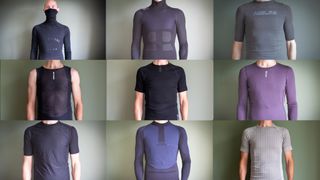
How do you stay warm while cycling in the cold?
Layering, that's the really simple answer. Just using one really warm layer like a down jacket, while it may keep you really warm if the conditions are just right, will normally be either far too hot, or too cold if you unzip it.
While I'm a huge advocate for decent winter outer layers, starting with one of the best cycling base layers will give you a great foundation. It'll insulate you immediately, and help manage the sweat that will occur so you are less likely to get chilled when it hits the cold air.
Many of the jackets here are standalone pieces that can be worn over a base layer, but some are more roomy to allow layering underneath. If you really suffer in the cold then an insulated mid layer like the Endura Pro SL Primaloft, or a fleecy option like the Pearl Izumi Pro Alpha will seal in more of your body heat and mean your winter jacket has to work less hard.
Finally, don't neglect the rest of your body. For years I rode around in a softshell winter jacket, bolstered by a gilet, winter hat and gloves, a neck warmer, and winter socks... and summer shorts. Your legs are the engine room and if they get cold the increased blood flow to them during exercise is going to cool you down fast.
Personally I run quite warm, so I usually opt for a set of winter cycling shorts and some leg warmers, but most people prefer to opt for a set of the best winter bib tights. Add in even a basic set of winter cycling socks and overshoes and a hat and you'll stay far warmer than relying on a winter jacket alone.
What layers should I wear for winter cycling?
To keep things simple, here's my general breakdown. Obviously your mileage may vary, but this is what I'd do for normal riding. If I was doing hill reps or similar I'd go up a temperature category to avoid overheating:
>15ºC - Midweight base layer, long sleeve jersey, gilet or wind jacket as preferred.
10-15ºC - Winter base layer, softshell jacket or midweight base layer, long sleeve jersey, winter jacket.
5-10ºC - Winter base layer, long sleeve jersey, winter jacket
0-5ºC - Winter base layer, insulating mid layer, winter jacket
<0ºC - Winter base layer x2, insulating mid layer, winter jacket. Ice risk, consider staying home.
This goes for the top layer only, and within that you can regulate your temperature surprisingly well with things like a neck warmer, a hat, different gloves, and socks.
Generally speaking, people tend to reach for long legs below about 15ºC, whether that's thermal shorts and leg warmers or dedicated winter tights.
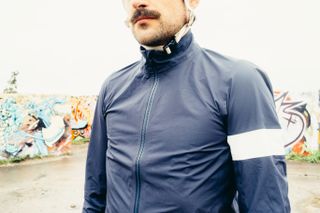
How do you stay warm while riding in the wet?
Freezing rain is about as hard weather conditions get to stay dry in. My first suggestion is that, if the weather is really that bad, do you need to ride outdoors? I get some perverse pride out of it, and it is part of my job, but given how good indoor cycling is now there's a lot to be said for spending less money on gear for that handful of truly awful rides, and investing instead in a smart trainer or things that'll improve your time on Zwift, Rouvy, or any of the other apps.
If you must head out in weather that is both cold and wet then I'd start with the shell; if you get wet you will get cold, so make staying dry your priority. My guide to the best waterproof cycling jackets has a load of really great options, but go for one with room to layer underneath.
Shell jackets aren't as breathable as a softshell option, so you won't actually need to layer up under as much as you would with a more breathable jacket, so just a base layer and a well insulating mid layer should keep you relatively happy underneath. The mid layers have a direct impact on the overall breathability, so don't overdo it.
In cold, wet weather it's often more your extremities you need to worry about. Your hands and feet will get wet, no matter how good your gloves and overshoes are, so my preference for cold wet rides is to make use of neoprene, not only for your hands but also your feet. I've got by using standard neoprene gloves, but my colleague Tom raves about Velotoze Waterproof Neoprene Gloves, and I trust his judgement. On your feet, you can get thin neoprene socks which can fit under a set of winter socks to add warmth even if everything is wet.
How cold is too cold for cycling?
You can to some extent set your own floor here. Obviously, if you live somewhere where the roads aren't gritted and there's ice risk then anything around or below freezing poses a hazard, not from a layering standpoint but just in terms of staying on your bike.
Off-road this is less of a risk, and with the right layering, there isn't really a too-cold scenario. You chuck out a huge amount of heat when exercising, it's just knowing how to keep it at the right level - Olympic cross-country skiers visibly wear very little, operate in sub zero conditions, and have wind chill to contend with too on descents much like cycling, so don't get put off by the temperatures plummeting - I promise you it's much easier staying warm than it is staying dry, having spent years trying to do both.
If you really do suffer in the cold then a really easy thing to do is make your rides shorter, but harder. Received wisdom is that winter is for 'base miles', which is cycling speak for long, relatively slow rides, where it's much easier to get cold. Swap these out for short, hard rides and you'll get the same fitness benefit without having to risk getting frozen to the bone miles from home.
How do I not get so sweaty cycling in the winter?
Ah if had an easy solution to this I'd be a millionaire... Proper winter layering does keep you warm, but it also brings with it the risk of overheating. On anything besides the flattest rides you're probably going to find yourself getting a bead on if you head uphill for any period of time.
A decent base layer, and double ended zips so you can get airflow to your inner layers are about as good a solution as exists. If you're a particularly sweaty rider then I'd advise against a single garment solution and instead use more, thinner layers, and take some way to store them on your bike if at all possible.
Should my winter cycling jacket be waterproof?
There is certainly no harm in your winter cycling jacket being able to shrug off a bit of light rain. Winter riding can come with showers, but also road spray from the rider ahead of you, and so avoiding that soaking in and evaporative cooling you is always a plus.
However, I'd advise against going for an all-in-one solution. Waterproof jackets are significantly less breathable than anything in this list, and with them comes an increased risk of getting sweaty. If you add insulation to that too the risk increases even more, making them often unpleasant if you're riding in cold but dry weather.
For wet and cold riding I'd focus on a separate shell and a better mid layer, and that way you'll have a shell for year round use too. For cold and dry riding then a softshell winter jacket with a bit of water resistance is best.
What is a softshell?
If you think of a waterproof jacket you likely picture something made of quite stiff, noisy material. They have to be like that to keep the water out. Softshells aren't like that. They often have a thin, windproof membrane to keep the wind chill off, but they are softer, more flexible, and oftentimes fleece lined too. They're more comfortable, more breathable, and more versatile. Usually they'll have a water repellent coating at least to shrug off a bit of light rain.
Every jacket here is some variation on a softshell. They're more versatile, but don't wear them in consistent rain unless you are prepared to get wet.
How should a winter cycling jacket fit?
There's something for everyone here: If you're riding hard and want an aero fit then the Assos Mille GT or the Castello Perfetto RoS are great examples of effective winter jackets that have quite a trim cut. The problem with these though is that they aren't much good if you want to layer up, so if you want to add more versatility (and comfort, for the most part) then getting something more roomy like the Velocio Alpha Zero will stand you in better stead as you can add layers underneath. You'll lose some watts, but when it's around freezing nobody is thinking about getting KOMs.


How do we test the best winter cycling jackets?
Often it means getting very cold in the name of bringing you the best options. Between this guide and my guide to waterproof jackets there's countless hours of riding in the cold and the rain. Once the seasons start to change I'll be out riding in the gloom and the damp to see how well the lighter weight jackets cope, and then throughout deep winter I'll be out in the cold as long as it is safe to do so.
Every Wednesday, barring any other commitments, I do an extremely hilly lap of the city which is a prime test for whether a jacket will overheat too, for those garments with a more high-tempo lening.
Behind all of this though is years and years of experience, not just from myself by from my colleagues too which I can draw upon to give you the best recommendations. I know how annoying it is to invest in winter kit that doesn't work because I've done it enough times myself, so you to quite a large degree learning from my mistakes.
Get The Leadout Newsletter
The latest race content, interviews, features, reviews and expert buying guides, direct to your inbox!

Will joined the Cyclingnews team as a reviews writer in 2022, having previously written for Cyclist, BikeRadar and Advntr. He’s tried his hand at most cycling disciplines, from the standard mix of road, gravel, and mountain bike, to the more unusual like bike polo and tracklocross. He’s made his own bike frames, covered tech news from the biggest races on the planet, and published countless premium galleries thanks to his excellent photographic eye. Also, given he doesn’t ever ride indoors he’s become a real expert on foul-weather riding gear. His collection of bikes is a real smorgasbord, with everything from vintage-style steel tourers through to superlight flat bar hill climb machines.
